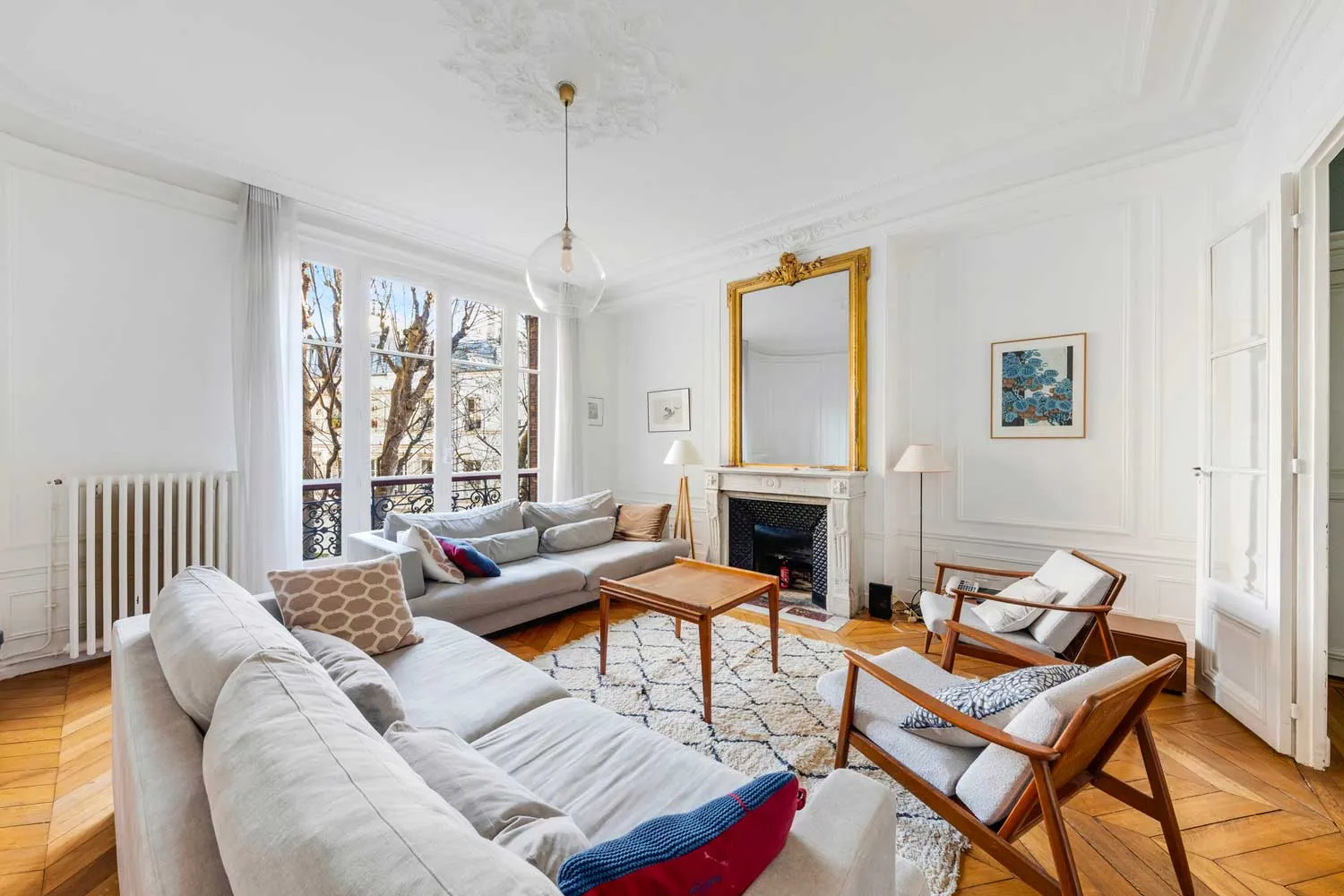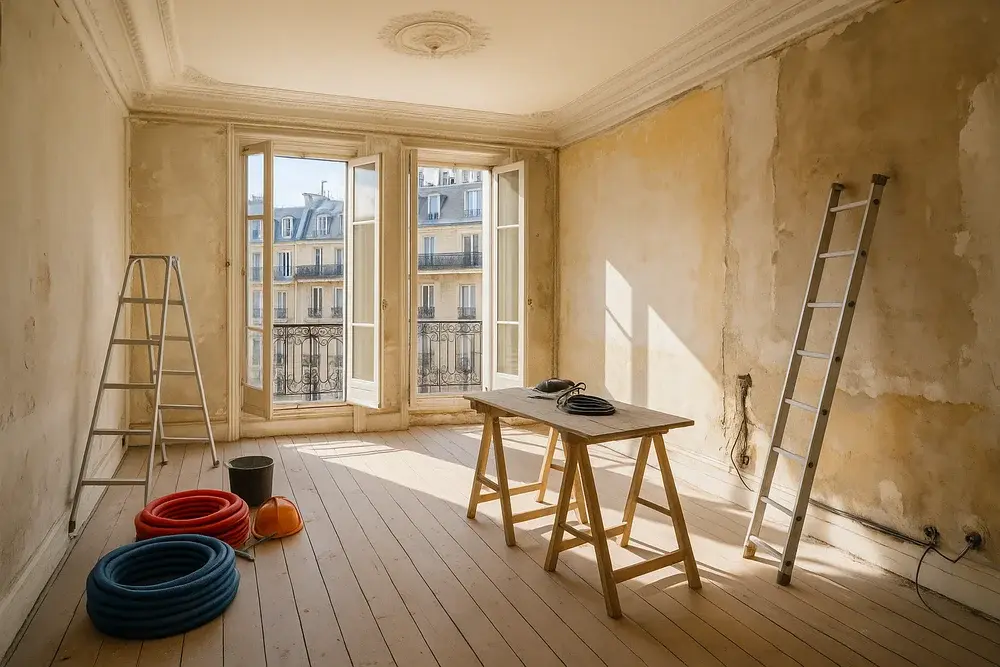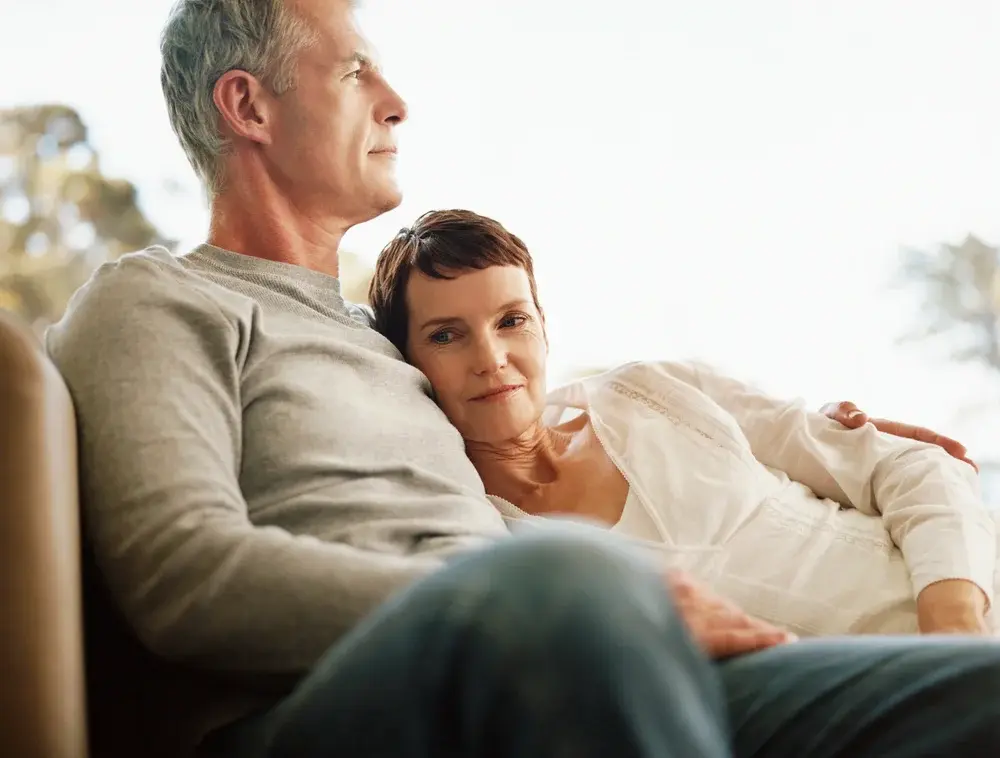Haussmannian apartment: a unique property
While the triptych of the Haussmann style: parquet / moldings / fireplace is familiar to all, many are unaware of what prompted Napoleon III to commission Eugène Haussmann, Prefect of the Seine, to transform Paris. We offer you a short stroll through time and history to share with you our passion for this timeless style that has been the beauty, pride and international reputation of our Capital since the end of the 19th century... The Paris we know with its small streets interspersed with large boulevards planted with trees and magnificent Haussmann buildings is very recent...

Haussmannian apartment in Paris at the beginning of the 19th century
Until the middle of the 19th century, Paris was a medieval city, without trees, without running water and without sewers. The city is sick: from 1832 to 1849, nearly 45,000 Parisians, including one Minister of the Interior, die there from cholera. Very high compared to the width of the streets, the buildings are damp and unsanitary. In some neighborhoods, nameless slums, so full of mud and dung, are piled up with poor people from the countryside to meet the needs of industrial revolution. The same unhealthiness is found on Ile de la Cité.
Finally, its configuration and its small narrow streets favor the creation of barricades and the central Paris is a real cut throat.

A political will to get Paris out of poverty
When Louis-Napoléon Bonaparte (Napoleon III), nephew of the Emperor, became the first president of the French Republic in 1848, he returns from 40 years of exile that took him to London and the United States. It is a year after the transformation of the Second Republic in the Second Empire in 1852, following a referendum, that Napoleon III appointed Georges Eugène Haussmann, prefect of the Seine, to succeed Monsieur de Rambuteau.
This appointment is accompanied by a mission that is particularly close to Napoleon's heart: make Paris a modern and clean capital by transforming it without paralyzing it. One immense urban challenge which is based on four strong axes: the creation of links between the various districts to unify the city, while improving the roads; the creation of green spaces such as the Bois de Boulogne and Vincennes, but also squares and tree-lined streets; the construction of a water supply system and a sewer network; beautification of Paris by the enhancement of its historic buildings.
Seventeen years of work to transform Paris sustainably
The work is beginning... If the improvement of the roads had begun under Napoleon I with the creation of Rue de Rivoli and had seen no less than 200 streets created between 1812 and 1848, this was not enough to accompany the growth of Paris.
Also, the state coffers not allowing any further continuation, Napoleon III and Haussmann rely on the law of expropriation for reasons of public interest, known as the “Rambuteau Law”, to promote widening of roads and the breakthrough of new paths. Because Baron Haussmann likes straight lines, perspective and, like Napoleon III, he aspires to “ventilate” Paris.
{{cta-vert-en="/../style-guide"}}
Paris is being redesigned...
Thus, from 1853 to 1859, a first network of 9.5 kilometers of tracks is created. These achievements include: Boulevard de Strasbourg, Boulevard de Sébastopol, Boulevard de Sébastopol, Pont-au-Change, Boulevard du Palais and Boulevard Saint-Michel, up to the Observatory, the extension of Rue de Rivoli eastward beyond the Louvre and the widening of Rue Saint-Antoine, Boulevard Saint-Antoine, Boulevard Saint-Germain and Pont de Sully, boulevards de Port-Royal and Saint-Marcel, Rue de Rennes and Rue Monge, rue Gay-Lussac and rue Claude-Bernard. Widening of rue Soufflot, avenue Foch.
26 kilometers more...
From 1859 to 1867, 26 kilometers of new roads come to redesign Paris. These include:
Right bank:
- the opening of the current Place de la République and the opening of the current Boulevard Voltaire, Boulevard Magenta and Rue Turbigo;
- Place de l'Europe and the opening up of Saint-Lazare station;
- Boulevard Malesherbes;
- the Monceau district, partly on the former Parc Monceau;
- the development of Place de l'Étoile and the surrounding area;
- Avenue Daumesnil to the landscaped Bois de Boulogne;
- levelling of Chaillot Hill and drilling of the current avenue Georges V.
Left bank:
- construction des avenues Bosquet and Rapp;
- extension of Avenue de la Tour-Maubourg;
- creation of Saint-Marcel and boulevard Port-Royal;
- Boulevard Arago, — opening of Boulevard Raspail;
- modification of accesses to Montagne-Sainte-Geneviève;
- profound modification of Ile de la Cité.
{{cta-bordeaux-en="/../style-guide"}}
Jobs that divide...
But, after 15 years of road work, breakthroughs to connect the six major Parisian train stations, and the creation of sewer and water supply networks, Parisians are fed up with this perpetual open-air construction site. The opposition fought this project: Haussmann was removed from office in 1870. However, this same opposition that brought down the Second Empire, will end the work by Haussmann under the direction of Alphand, first prefect of the Seine under the Third Republic.

Haussmann buildings
Ironically, the buildings that were all erected after the departure of the Baron (from 1870 to 1920) were all called “Haussmannians” because of the strict standards that he had adopted for new buildings. He wanted to guarantee an architectural homogeneity.
Without the building spirit of Baron Haussmann, who supervised for 17 years the transformation of Paris, the construction of Haussmann buildings as we know them today would not have been possible. And Paris wouldn't quite be Paris...
The Haussmann building: the reflection of a society
These buildings were not designed for the very wealthy classes or the nobility who already had or were having their private mansions. These buildings were intended to bring together several families from various social classes.
That's why, the second floor had a very well worked balcony, because it was generally inhabited by richest in the building who shouldn't have to climb too many stairs. The fifth by the most modest who did however benefit from a balcony wire ensuring the good balance of the facade, but whose ironwork was much less elaborate. As for the floors of the 3rd and 4th, they were generally occupied by the petty bourgeoisie, often tenants of the owners of the second. Finally, the 6th and last floor was entirely For servants only.
{{cta-vert-en="/../style-guide"}}
Social hierarchy of Haussmannian buildings in Paris
This social hierarchy expressed in the floors was also found in the ceiling heights. Formerly, the first floor, or mezzanine, was occupied by merchants, owners of stores on the ground floor. Their windows were lower than the others for reasons of symmetry. They had to be reduced since the porch level was just above. Their ceiling height could not exceed 2.60 m, compared to 3.2 meters for the second floor.
With this one exception, all the rest of building followed the social hierarchy of the time : the ceiling height decreased as you went up. Today, with the elevator, the fifth floor has become the most sought after floor. It is in fact less noisy, offers clearer views and more clarity.
.webp)
Characteristics common to Haussmann buildings
All these buildings share certain characteristics that make up the charm and beauty of these buildings so Parisian:
- Facades made of cut stone from numerous quarries, sometimes located several hundred kilometers from Paris;
- A ground floor and a mezzanine usually streaked with deep load-bearing walls (splits) that strongly mark the carefully decorated facade;
- Balconies located on the second and fifth floors;
- Zinc-plate roofs, an inexpensive material that was easy to cut and install, but very modern for the time;
- Maid rooms, living spaces created thanks to the lightness of the roof;
- A height of buildings strictly limited according to the width of the road they border.
Architecture of a Haussmann building
According to the ideas of the time, the Haussmann building, designed in L or U, always offers an interior courtyard in order to promote lighting and ventilation. Inside, we discover a large entrance, formerly called “antechamber”, which continues with a long corridor leading to the various rooms in a row, equipped with large windows: dining room, living room, bedrooms, kitchen at the end of the corridor and accessible from the service staircase and accessible from the service staircase, finally the bathroom, on the side of the interior courtyard.
In the the most prestigious Haussmann buildings, you can also find a reception room.
In terms of interior design, we find the three elements that make up the DNA of Parisian Haussmannian apartment : parquet, moldings and fireplaces. Solid parquet, which gives a incomparable cachet to the apartment, is in chevron, Hungarian stitch or broken stick. The moldings are from beautiful and rich ornamentations in wood or plaster (Greek profiles, Louis XV style volutes, Art Deco geometries) that can be found all along the walls and at the corners of the ceilings up to, sometimes even, the door or fireplace frames.
Finally, the Haussmannian chimney, often made of marble, used to heat living rooms and today retains a decorative and pleasant function.
{{cta-bordeaux-en="/../style-guide"}}
In conclusion
In conclusion, the Haussmannian apartments demonstrate a remarkable ability to transcend eras, adapting harmoniously to trends contemporary in interior design. Their classical architectural design, with high ceilings, large windows, and elegant details like moldings and marble fireplaces, provides an ideal canvas for modern layouts.
Whether by adding minimalist touches or integrating modern technologies, these spaces easily lend themselves to a variety of styles, from the most refined to the most daring. This aesthetic flexibility, combined with their strategic location in historic districts of Paris, insures the Haussmannian apartments a relevance and lasting value in the Parisian real estate market current.
En investing in a Haussmannian apartment, the owners thus offer themselves the opportunity to create a living space that is both rooted in the rich Parisian heritage and perfectly adapted to modern comfort requirements.




